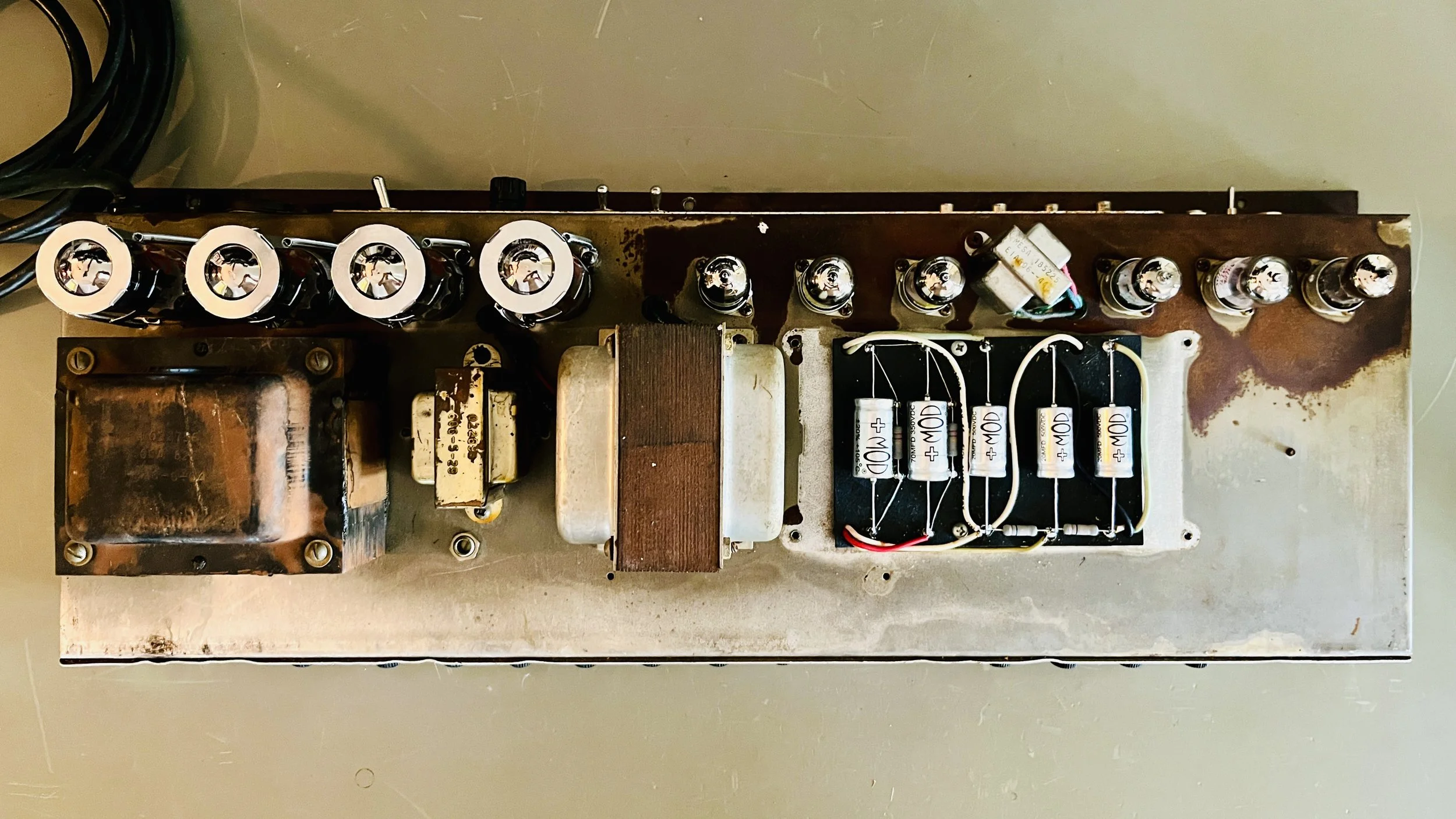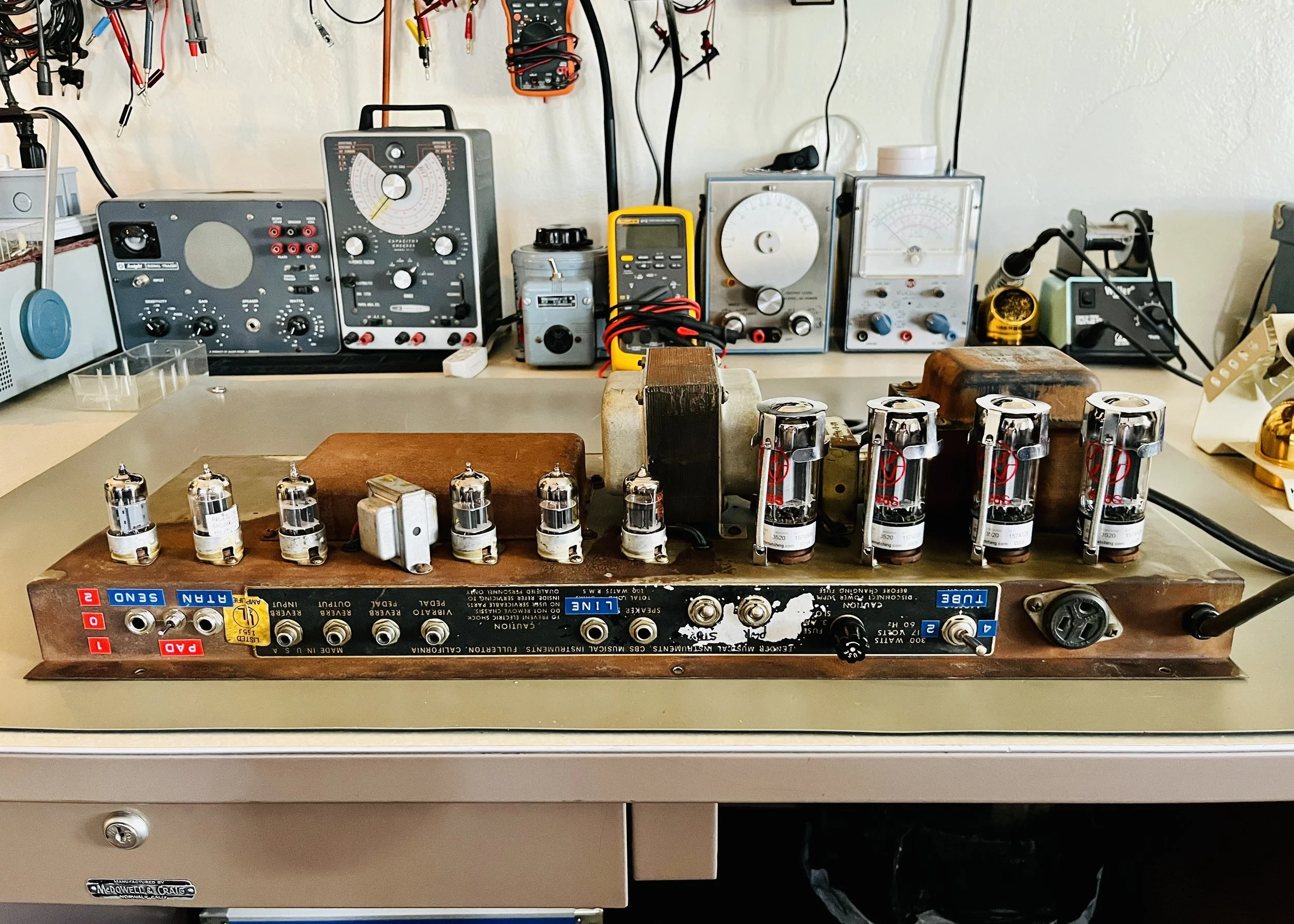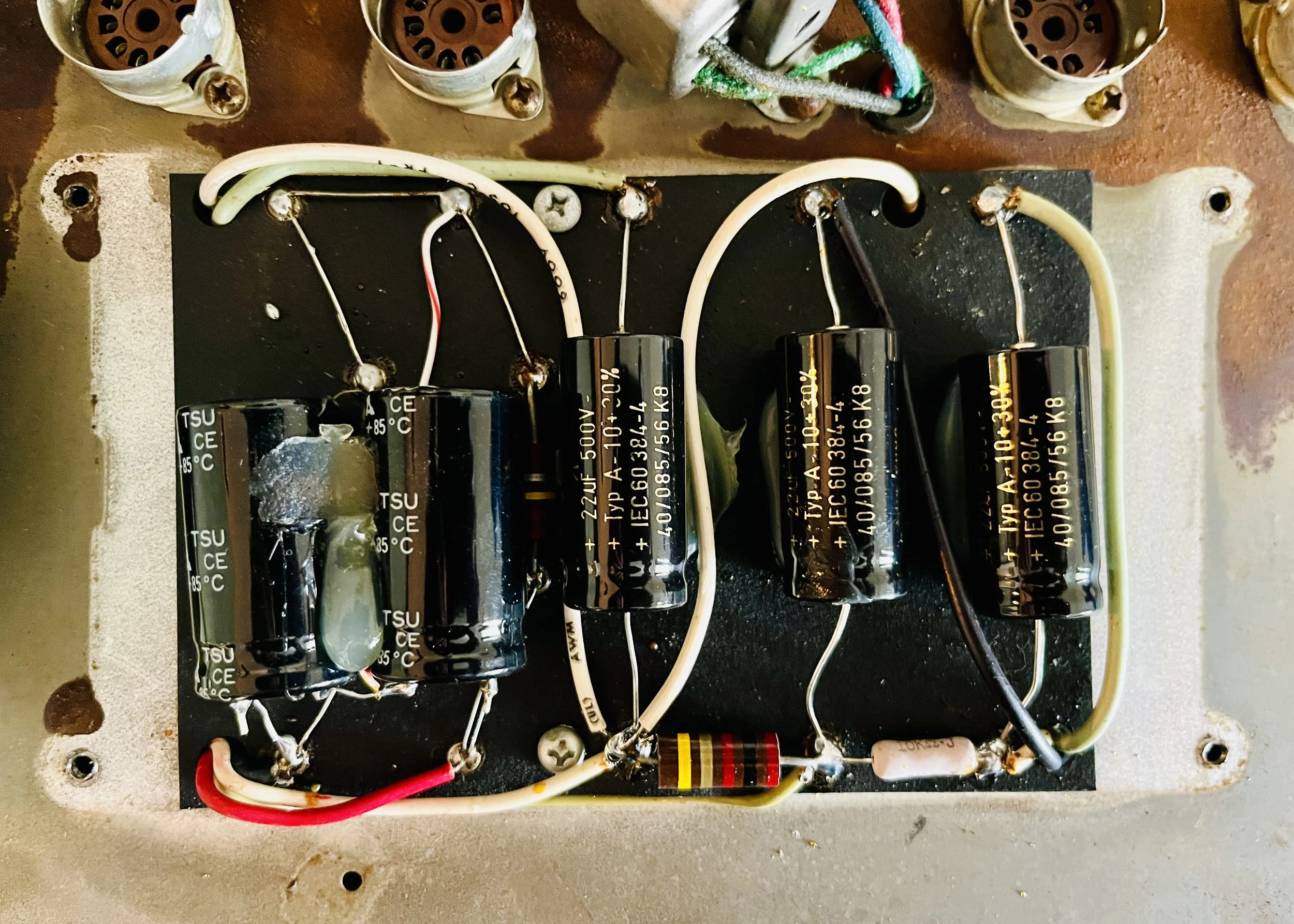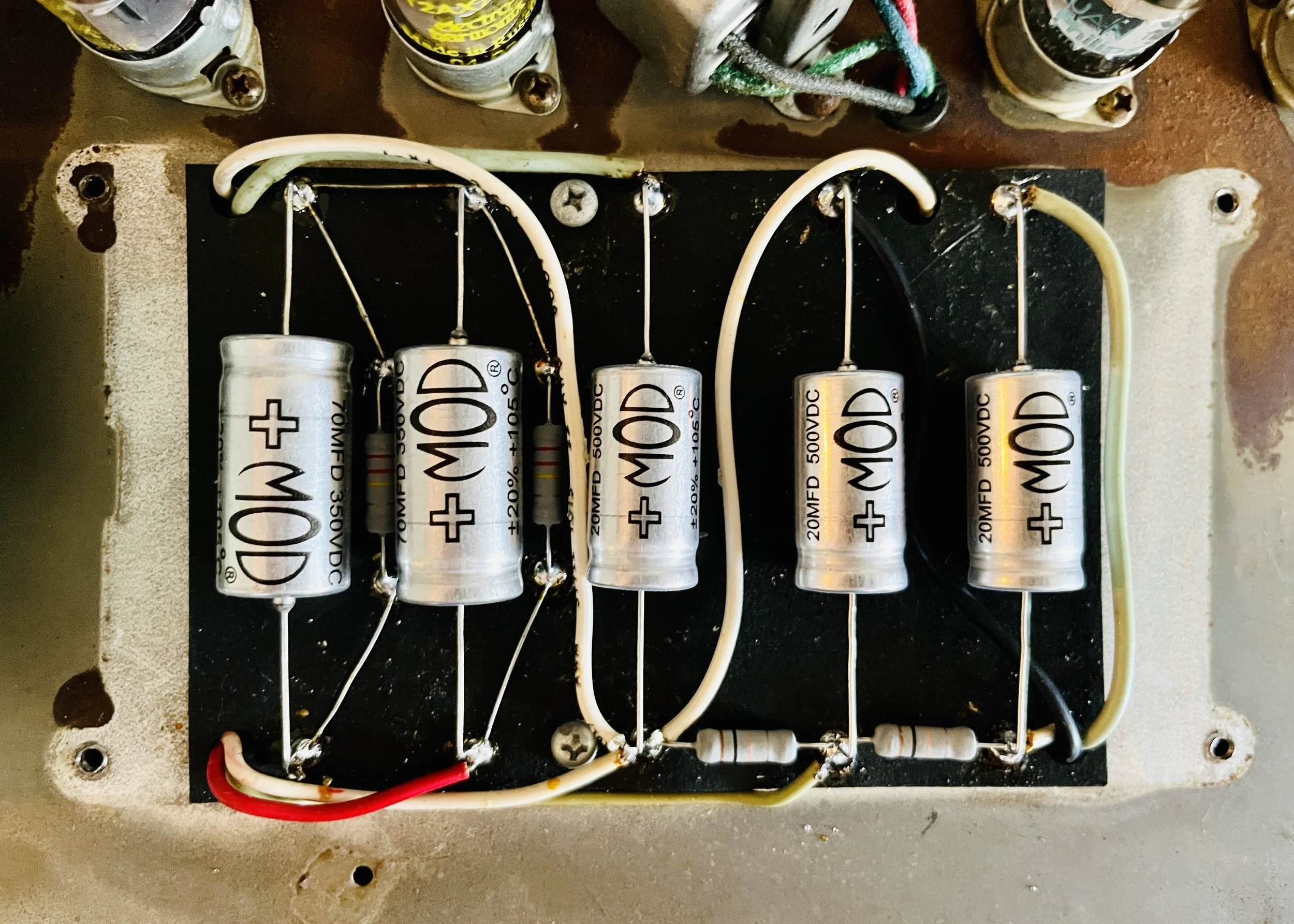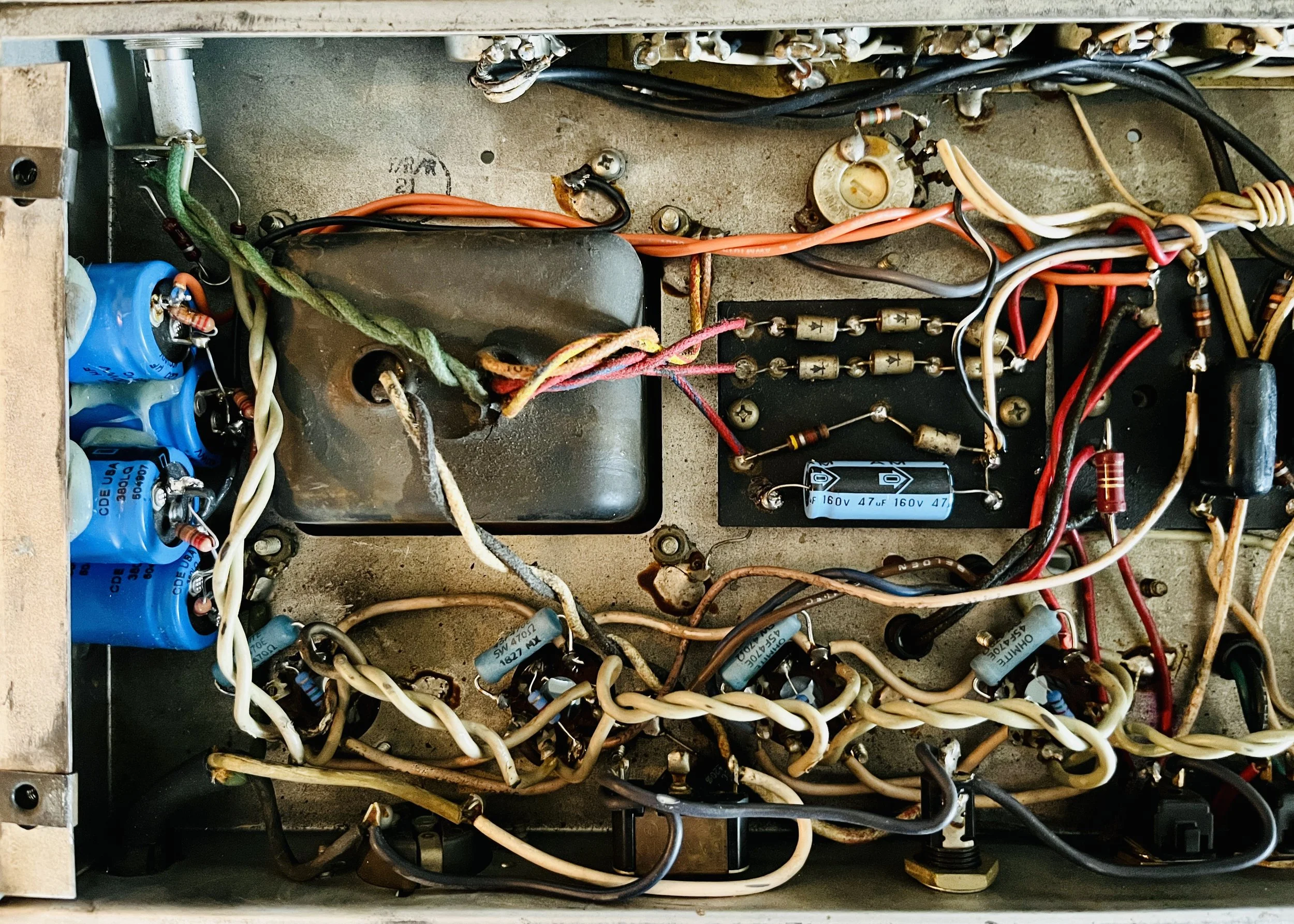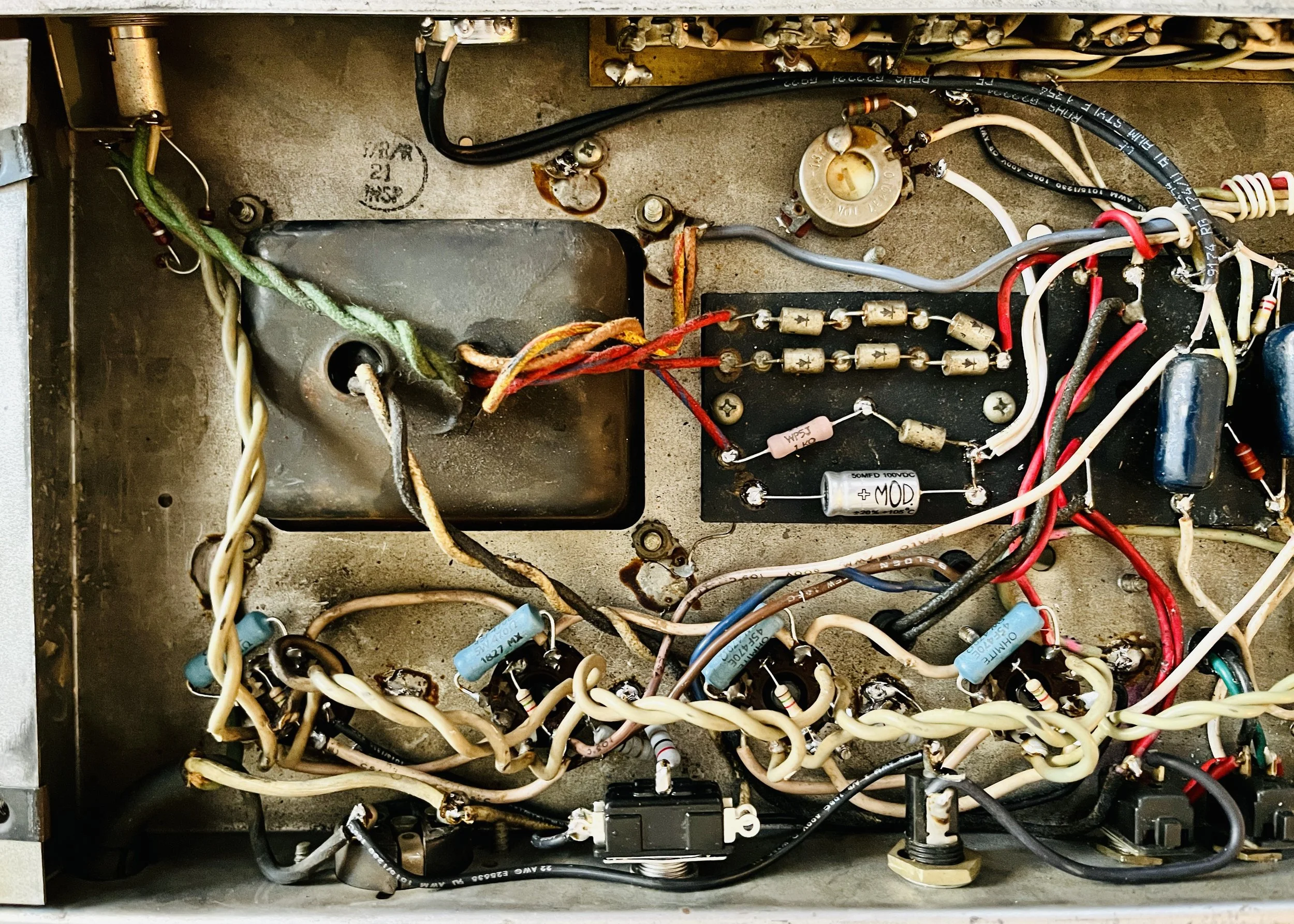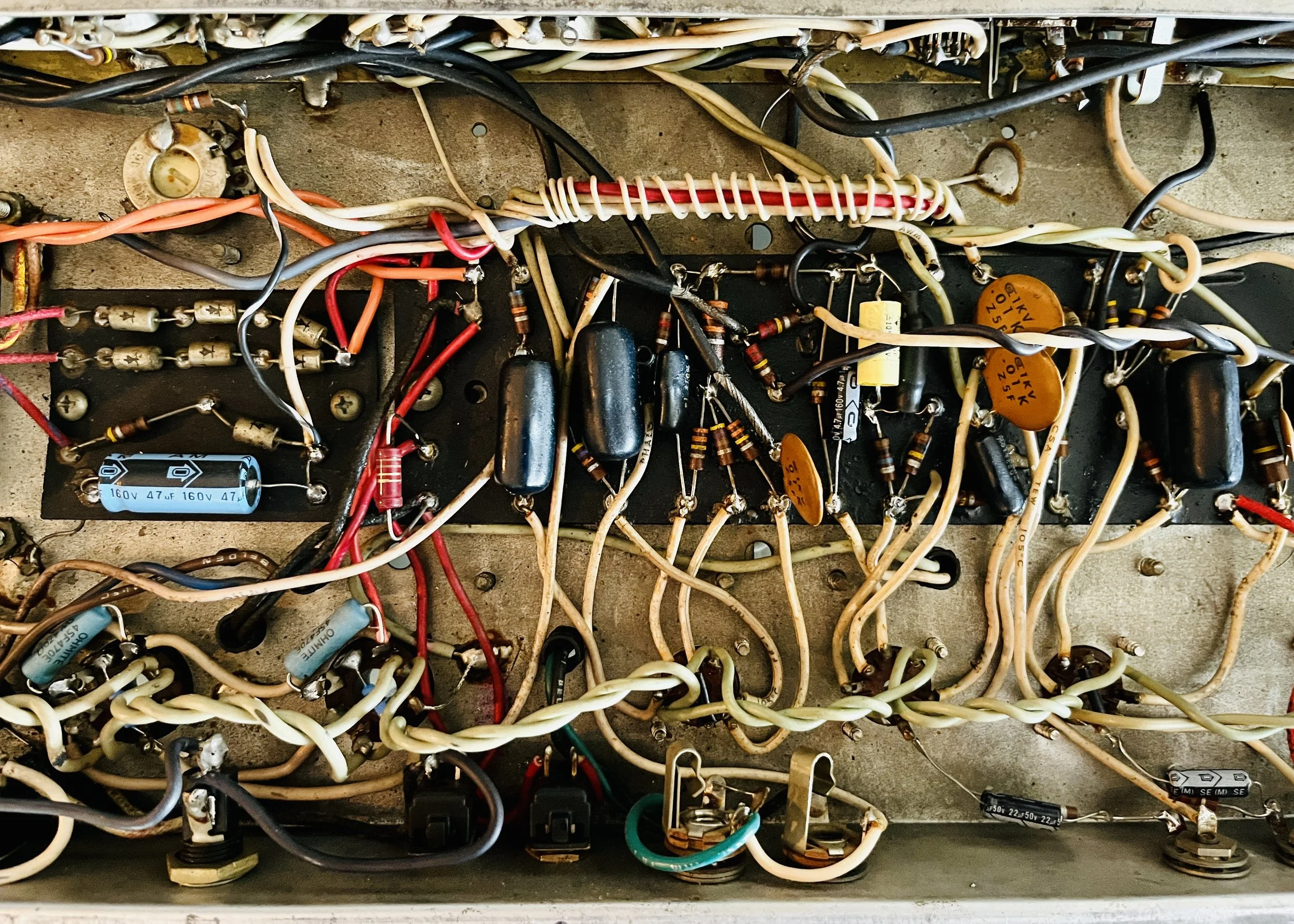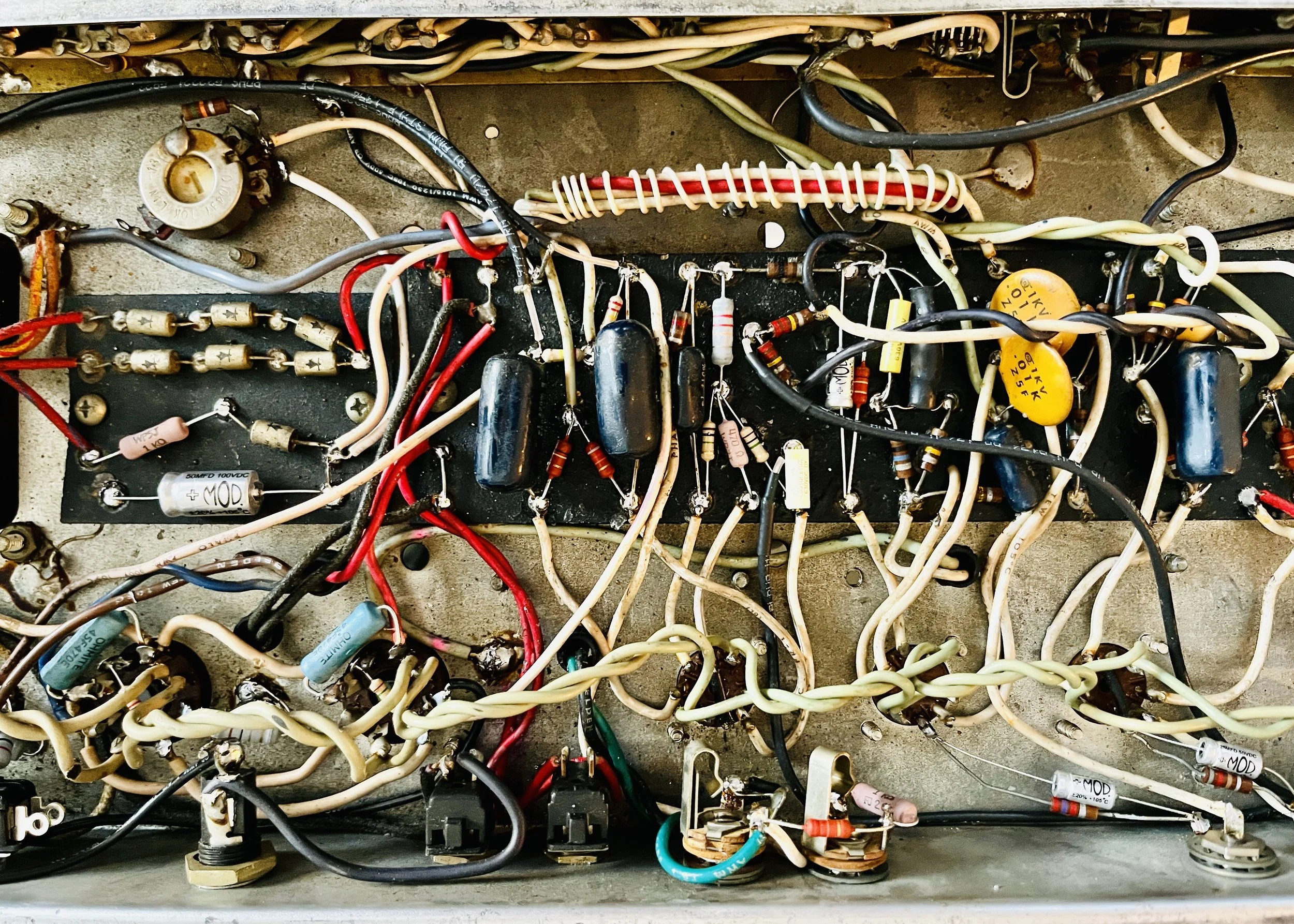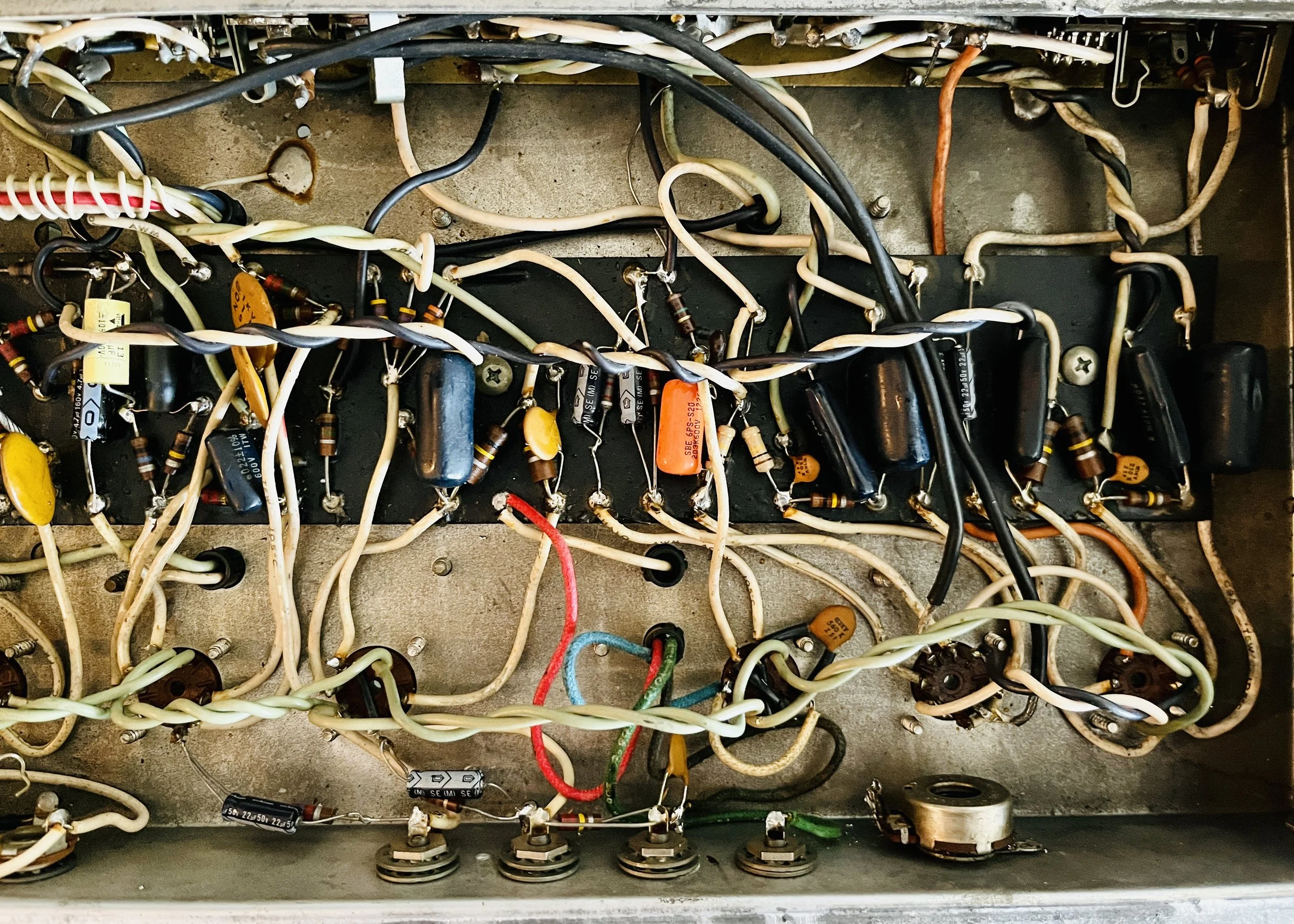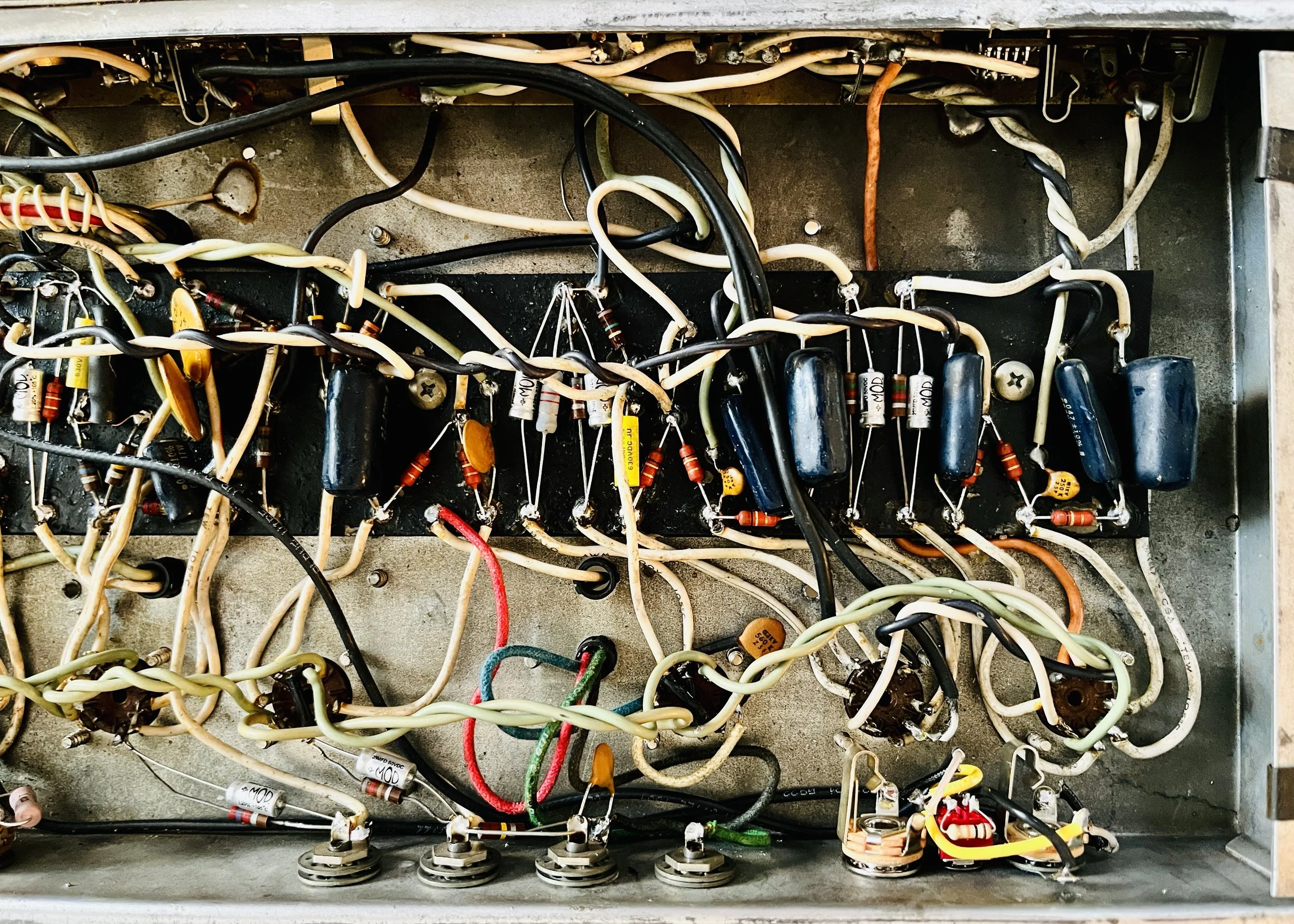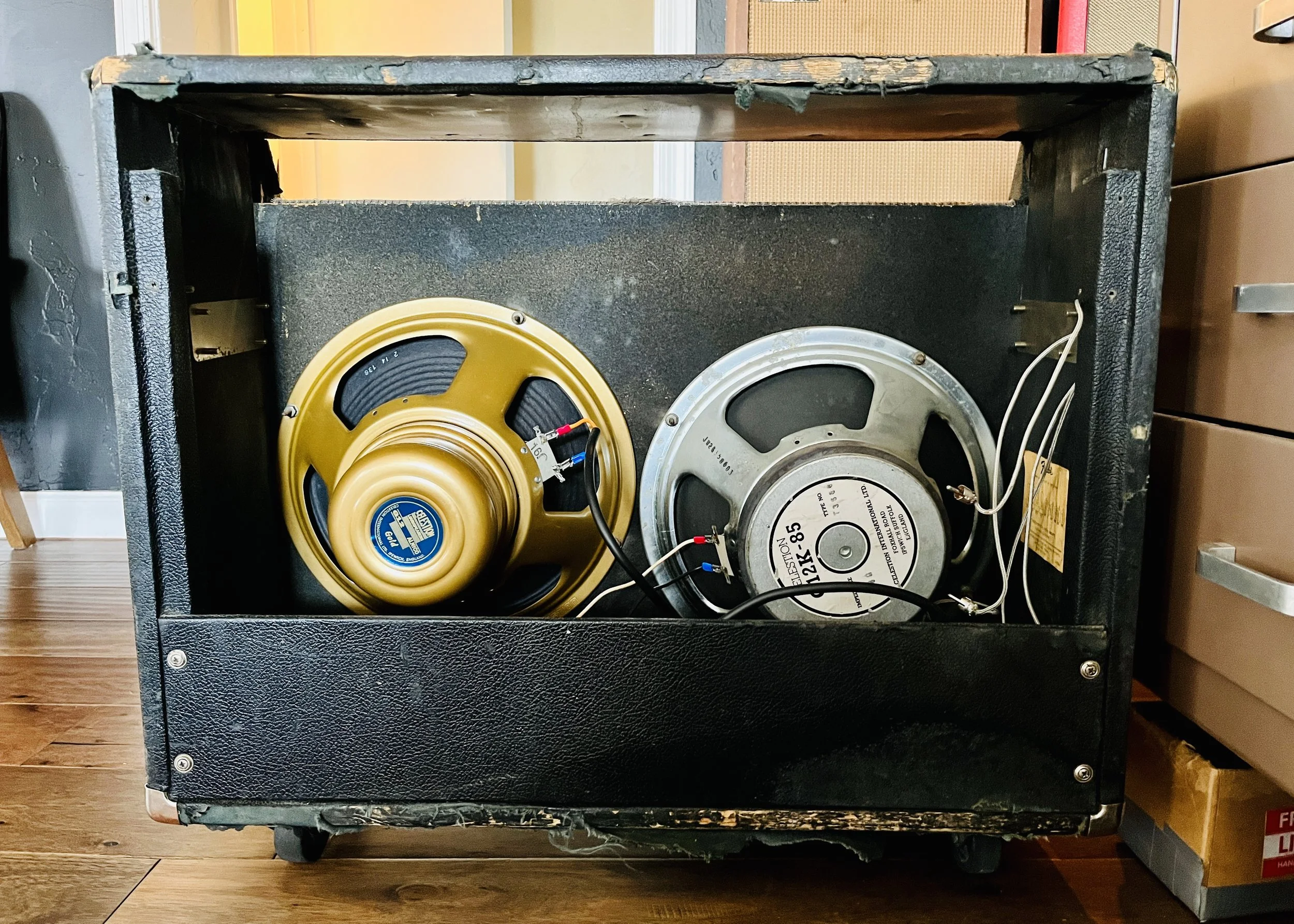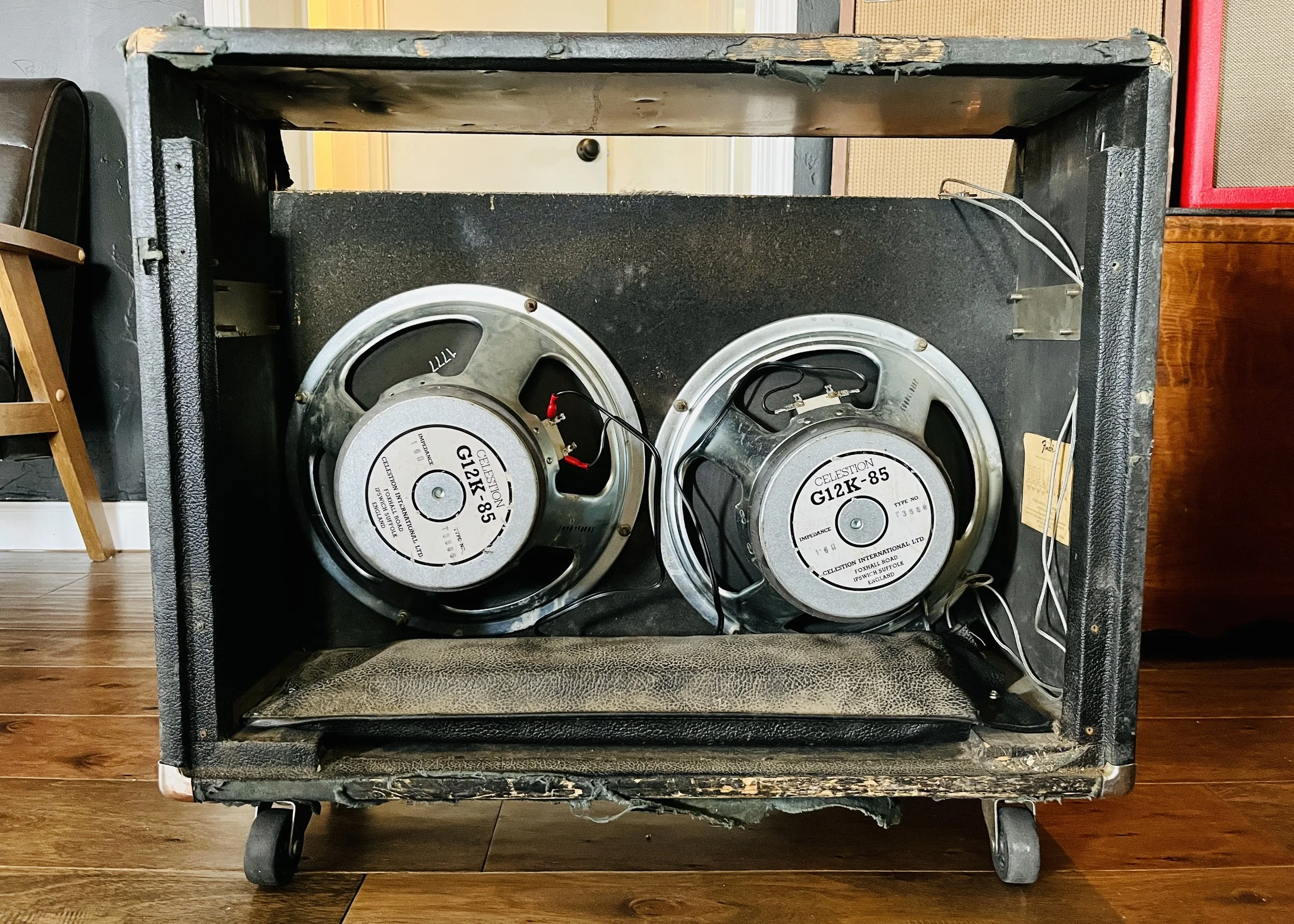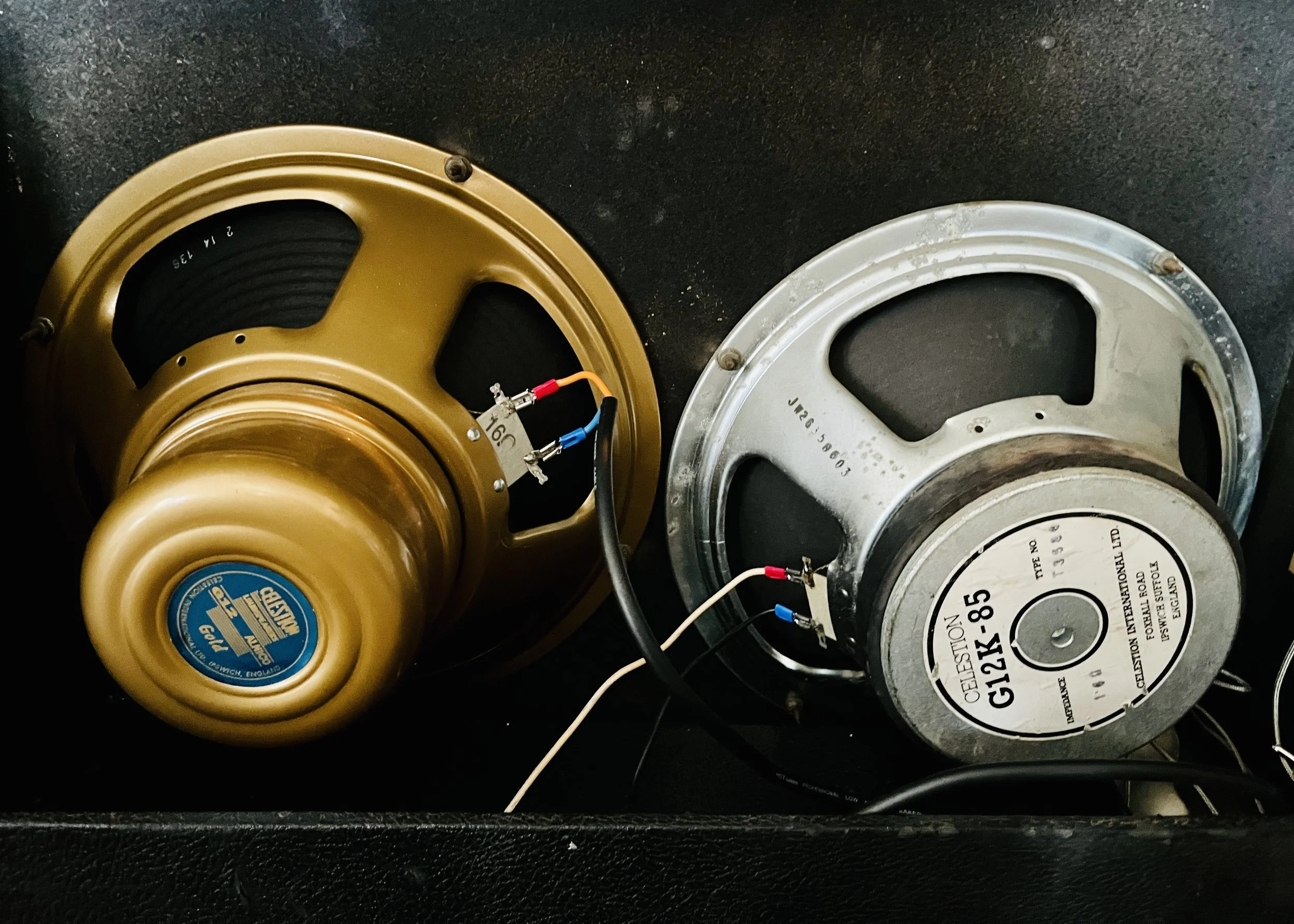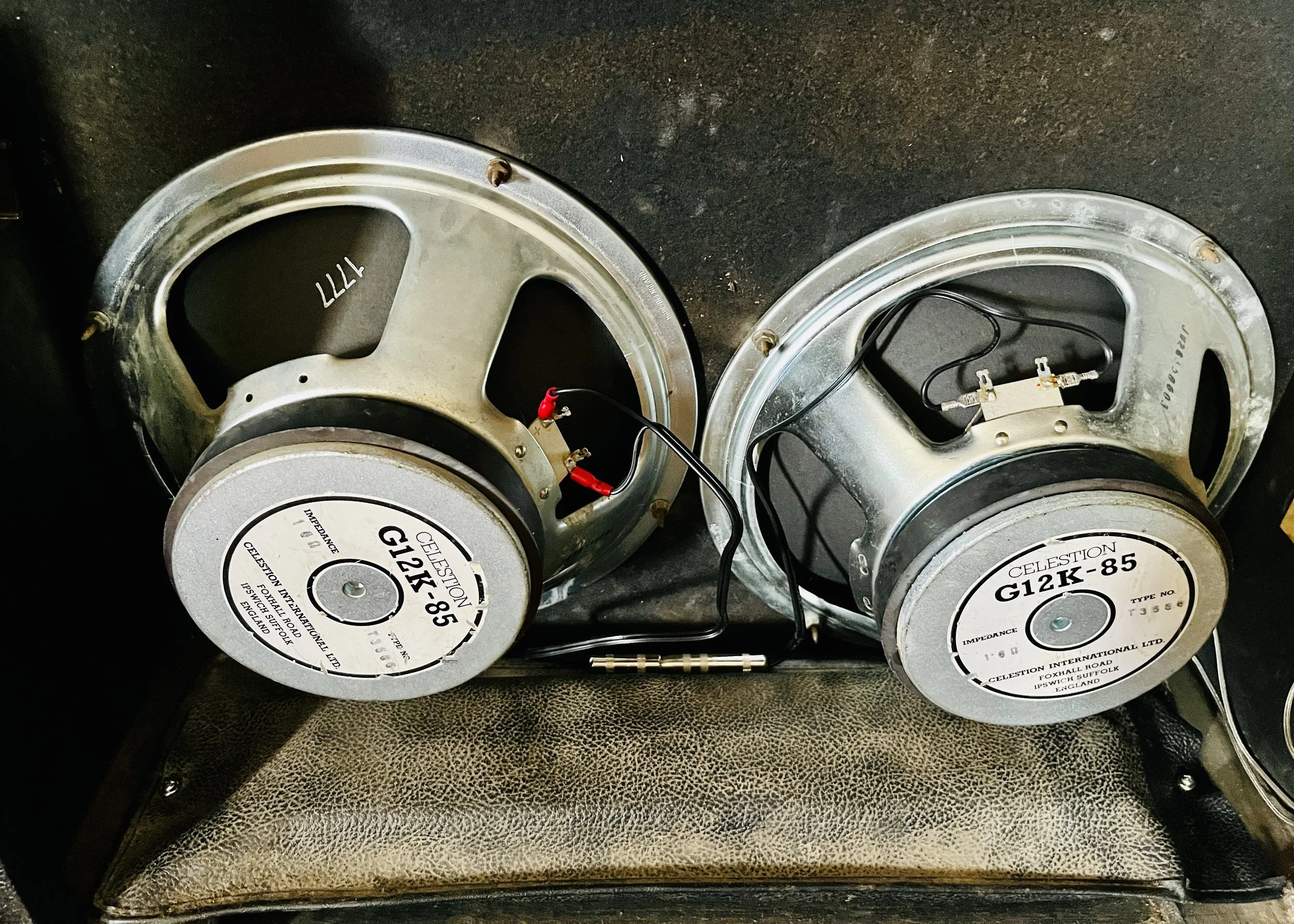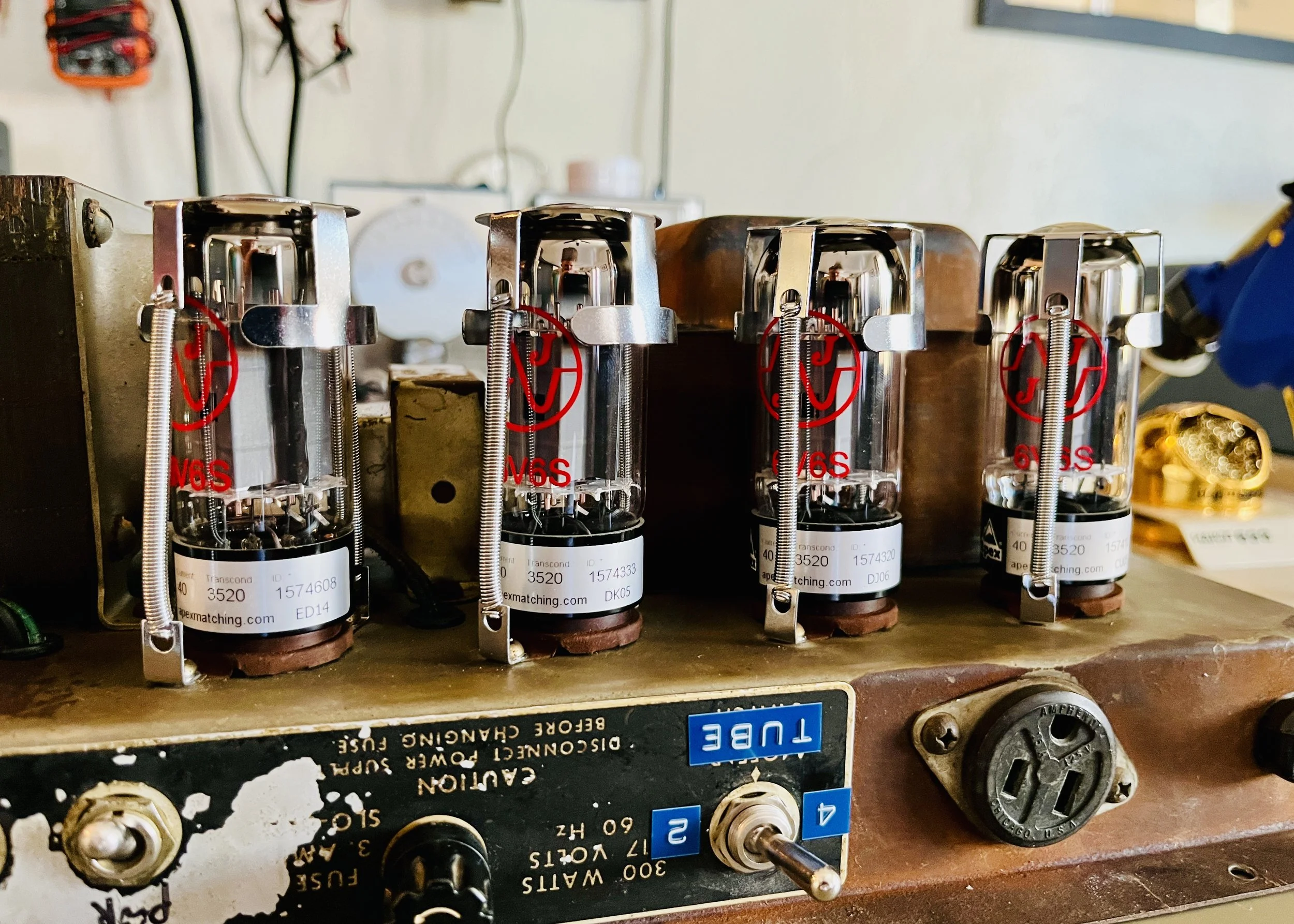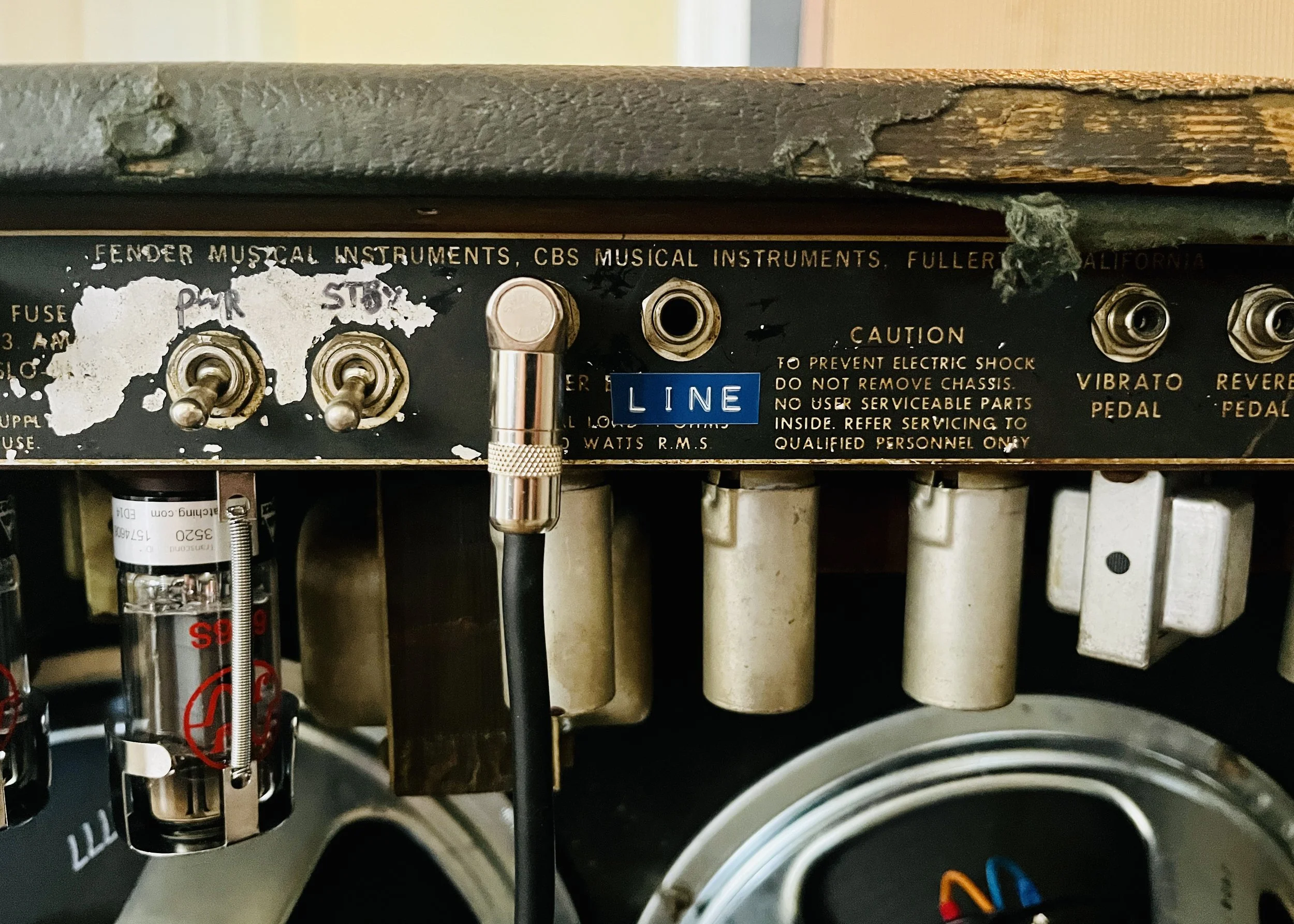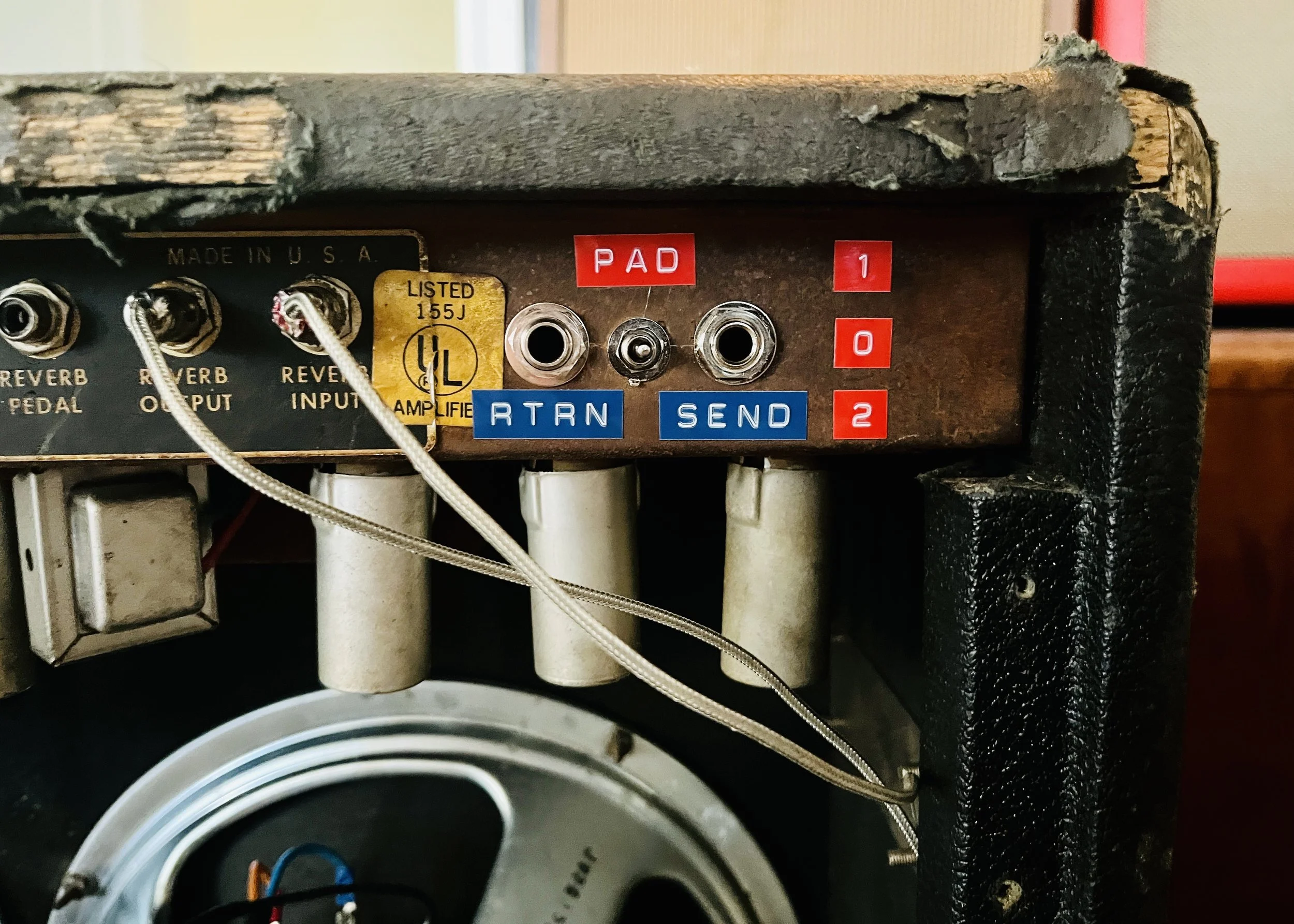1976 Fender Twin Reverb
There are many versions of the Twin Reverb that Fender made during the 1960’s and 1970’s. All of them were very popular with musicians then and now and consequently the Silver-Panel Fender Twin Reverb is the most common vintage amp that I get in. This 76’ Twin was made after the buyout of Fender by CBS in 1968 and is the mid-70’s CBS 100 Watt revision made with the addition of the Master Volume circuit - the merits of which are often debated and criticized one way or the other. This does not have the push-pull Master Volume boost though, which in my opinion is a good thing. There are a number of changes to this circuit from the iconic and coveted Black-Panel AB763 Twin Reverb that make this amp cleaner, and to many peoples ears, colder and harsher. The lowering of plate voltages in the preamp, increased filtering of the power supply, and the “improved” balancing of the Long Tail Pair Phase Inverter are largely responsible for the change in tone. These can be great sounding amps however and with 100 watts of power and 2 x 12” speakers it will make sure you are heard. Notable users include: Alex Turner, Jack White, Allan Holdsworth, and Ty Segall.
This one came in having already been repaired many times before, a lot had been done to this amp but not much of the work was right. Non-original parts values, incorrectly formatted parts (modern radial snap in caps instead of axial leaded electrolytics), and a non-sensical heavily modded power supply filter section were all present. A previous tech had tacked on an extra half-dozen electrolytics to the filter section in the power supply and siliconed them all into the chassis. The extreme amount of capacitance presented to the solid-state rectifier loaded it down and made the amp sound constipated, dark, and sterile. The technique used in installing all this was sloppy and amateur. Why this was done I cannot say, maybe the tech thought the extra caps would lower the noise of the amp or… who knows really, but it had no place in the schematic of this amp and added nothing to the tone that was good. A full restoration was needed here and the customer wanted this amp taken back to Black-Panel AB763 spec as well. Along with that work several mods were done that were designed to make it easier to use this amp in the studio for recording. For the restoration it needed a cap job, new power/plate/misc. resistors, power tubes, different speakers, and cleaning. In order to make this amp fit the needs of the customer (specifically recording) the amp was heavily modified. A power tube conversion allowing the amp to use 6V6 tubes was performed, dropping the power to a user selectable 40 Watts (4 6V6 tubes) or 20 Watts (2 6V6 tubes). Essentially this turns the whole amp into something akin to the Fender Pro Reverb or the Deluxe Reverb respectively. A passive FX Loop with a custom designed Pad switch, a separate Line Output (post-OT), a Trainwreck Type-3 Master Volume, and the ability to easily switch between a 2 x 12” or 1 x 12” cab configuration round out the added features.
Amp was completely restored and modded to AB763 Black-Panel specs. All filter/bias/bypass caps were replaced with upgraded voltage and temperature rated MOD brand electrolytics. New 2 Watt Metal Oxide power dropping resistors were installed for better reliability and lower noise floor. The cathode resistors for V3 and V6 were replaced with 2 Watt Metal Oxide/3 Watt Cement type units due to heat damage and for preventative maintenance. All plate resistors were replaced with 2 Watt Reduced Mass Metal Film type units for preventative maintenance and reliability. The 5 Watt screen resistors were kept from previous repairs as they were installed correctly. New Carbon Film 1/2 Watt resistors were installed for the bias and power amp section for the modifications. 1 ohm 2 Watt Metal Oxide resistors were installed on pin 8 of the power tubes to provide an easy way to check the bias. Two Mallory 150 brand film capacitors were used to mod the preamp and phase inverter to AB763 spec. A .01uf 630v Mallory film cap was used to mod the Trem circuit to stop it from ticking. All capacitor and resistor values were chosen to make amp compliant with AB763 values.
A Trainwreck Style Type-3 Master Volume circuit (Post-Phase Inverter) was put in to replace the original Pre-Phase Inverter MV present in the amp. This makes the amp have much more power tube distortion available (primarily capturing the OD that happens in the PI) and also allows the FX loop to be used as a send while using the MV for muting the output section.
A passive FX loop was put in with Send/Return 1/4" jacks and a mini-switch that functions as a Pad for the Send. The FX loop is placed after the both preamps and right before the Phase Inverter. The Pad selects between 3 options: (0) = no gain reduction, (1) = 75% gain reduction, (2) 93% gain reduction. (0) is useful for using the amp with different power amps and can drive amps between 40 Watt -100 Watt RMS. (1) is useful for recording or smaller power amps between 5 Watt -35 Watt RMS. (2) is useful for inserting line-level effects pedals in between the pre and power amp, and recording. The Pad is always active and affects the entire gain structure of the power amp even when nothing is in the FX loop, for this reason the switch should be put in the (0) position for standard volume/tone. Although because it functions much like a Pre-Phase Inverter Master Volume it can be used to clean up the amp's overdrive and dramatically lower the volume of the amp's output for different tone/gain structures and recording. Inserting anything into the Return jack by itself disconnects the preamp from the signal chain. The Send is always active. A Line Out jack was installed where the previous Ext. Speaker jack was, this provides a line-level signal (97% gain reduction) tapped off the Output Transformer and can be used with IR/cab simulation or any line-level recording technique. It captures the entire signal chain with exception of the speakers.
The entire power amp was converted from a quad of 6L6GC'S to either a quad or a pair of 6V6S tubes. This brings the amp down from 100 Watts of power to either 40 Watts (Pro Reverb), or 20 Watts (Deluxe Reverb). Selecting between the 40 Watt or 20 Watt topology is done with a power toggle switch located where the previous ground switch was. The power dropping resistors and relevant preamp plate voltages in the power supply were lowered to a middle ground between a Pro Reverb and Deluxe Reverb schematic to make the amp safe for the 6V6 tubes. Due to the higher plate voltages in the power amp provided by the Twin Reverb Power Transformer, only JJ brand 6V6S power tubes are safe to use in this amp. Their higher than normal 500VDC plate voltage rating and 14 Watt Plate Dissipation power rating make this conversion possible. In the 40 Watt mode the amp is designed to use both speakers for an 8 Ohm load. In the 20 Watt mode the amp is designed to use one speaker for a 16 Ohm load.
We decided to have the speakers changed to a pair of vintage Celestion G12K-85 16 ohm speakers that the customer already had on hand. This allowed the amp to have the new 8 Ohm (2 speakers in parallel) or 16 Ohm (1 speaker with the other disconnected) needed for the 6V6 power tube conversion. A new custom wiring harness was devised to allow the right hand speaker to be disconnected easily and durably using an in-line female and male 1/4" speaker jack/plug.
The Reverb Tank was installed incorrectly when the amp came in. The tank was taken out and re-oriented with the Output Transducer on the opposite end of the cab from the Power Transformer. New screws were installed to keep the tank in place as the originals were missing.
The original tubes all tested good but the power tubes were replaced for the conversion. This was the final lineup: V1 = TOSHIBA 12AX7A, V2 = MULLARD 12AX7, V3 = PHILLIPS 12AT7, V4/V5 = EHX 12AX7, V6 = SHUGUANG 12AT7, V7-V10 = JJ 6V6S Matched Quad. These tubes were picked for best tone, and reliability. The 6V6S's Fixed Bias was set to %70 Class AB Plate Dissipation with a B+ of 450VDC. The tube sockets were all re-tensioned and treated with De-Oxit to remove/prevent corrosion. The pots were sprayed out and the amp was cleaned inside and out. All hardware was tightened.
This Twin Reverb was essentially turned into a custom amp designed around the unique needs of the customer. It turned out great and transformed a very loud and not very desirable model from Fender’s vintage lineup into a bespoke piece of equipment that can be used much more easily and delivers much better tone.



